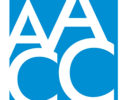Changing classrooms in Minn.
By AACC 21st Century Center Staff
September 27, 2018
A Minnesota community college is collaborating on a project to diversify teacher candidates and address teacher shortages.
In Southwest Minnesota, changing demographics are leading to changing educational needs. The region has seen a large influx of immigrants in the last 20 years. Within Worthington Public School District #518, about 68 percent of the high school students are from one of more than 40 cultures in the area. In the elementary schools, 78 percent are students of color.
Because of this increased diversity in the classroom, the new Southwest Teacher Preparation Partnership involving Minnesota West Community and Technical College will work to increase diversity in the teaching ranks while also addressing the teacher shortage in the area. Building teacher preparation pathways will be the work of project, which also involves Southwest Minnesota State University and Worthington District #518.
“Many of these students want to pursue careers in education but feel limited by opportunity, finances and geography. The intention of the project is to help remove those barriers and generate pathways to access,” says a press release from Minnesota West. The project is being funded by a $75,000 planning grant from the McKnight Foundation and a $15,000 grant from the Southwest Initiative Foundation.
Current high school juniors and seniors will get opportunities to participate in college-level education courses, such as introduction to education, developmental psychology, child care and multicultural education. They’ll also engage in community service opportunities that will allow them to interact and support young people.
Students will have the opportunity to pursue their two-year degree through Minnesota West, and transfer those credits to SMSU and earn a four-year education degree, which will be offered on the Minnesota West-Worthington campus.
Many of the students who will benefit from this would be first-generation college students.
Across the country, teacher diversity is an issue. According to a 2017 Center for American Progress report, “efforts to increase teacher diversity have led to marginal increases in the percentage of teachers of color — from 12 percent to 17 percent from 1987 through 2012.”
“Teaching is very rewarding: you have the opportunity to positively impact hundreds of young people throughout your career. Sharing more about what it means to be a teacher and how to pursue a career in education can help dispel myths and encourage those who are interested in teaching as a profession,” Kayla Westra, dean of institutional effectiveness and liberal arts at Minnesota West, said in a release. “Projects like these are impossible to undertake without collaboration and vision for the region and the people who live here.”
Addressing teacher shortages is not only happening in Minnesota. Last week, CC Daily reported that California Gov. Jerry Brown signed a bill allowing aspiring teachers to take classes toward their credential on community college campuses. In Mississippi, Pearl River Community College will provide education classes for third- and fourth-year students at its Poplarville campus thanks to a partnership with William Carey University. This means students won’t have to travel far for classes. Program participants will agree to teach for a minimum of three years in one of the three Pearl River school districts. And in August, this post highlighted a partnership between Polk State College and Polk County Public Schools (PCPS) in Florida that will lead to a pathway from high school to college to employment for aspiring educators.



